India's Renewable Energy Goals Face Land, Climate Challenges
By Rediff Money Desk, New Delhi Sep 10, 2024 18:42
A new study reveals significant challenges to India's renewable energy goals, including land availability, population density, and climate risks.
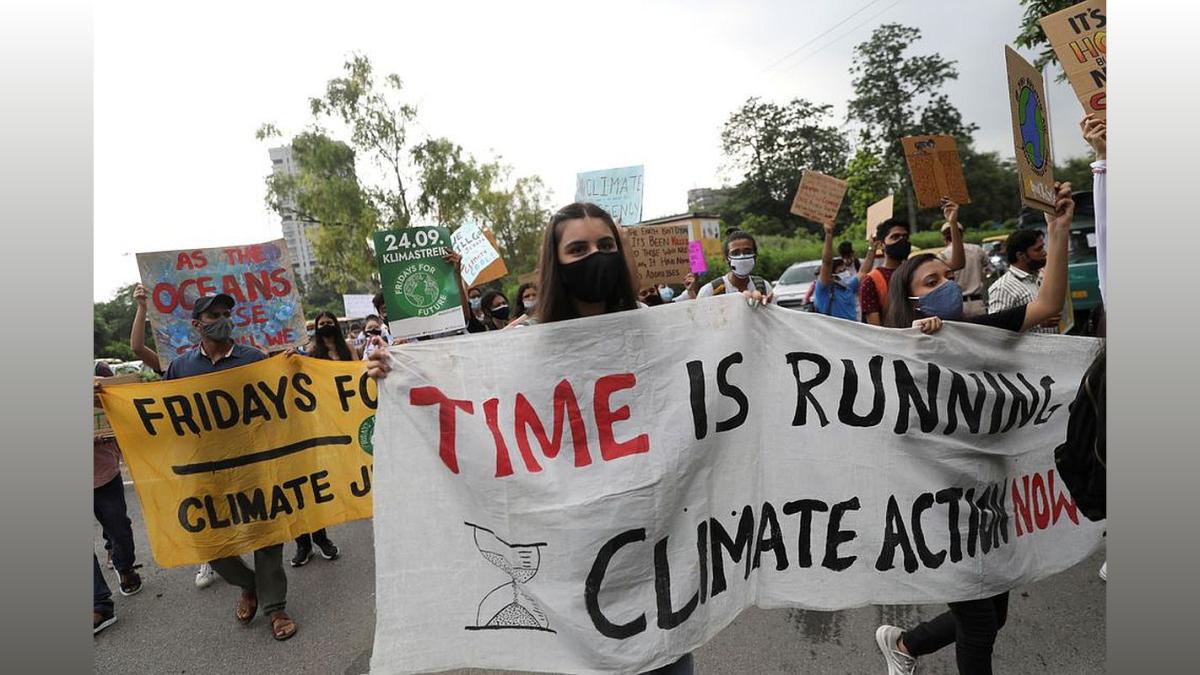
New Delhi, Sep 10 (PTI) India needs to install around 7,000 gigawatts (GW) of renewable energy capacity to achieve net-zero emissions by 2070 but deployment beyond 1,500 GW could face critical challenges, including climate risks, high land prices, land conflicts, and population density, according to a new study.
The study by independent think tank Council on Energy, Environment and Water (CEEW) is the first of its kind to map India's renewable energy and green hydrogen potential by analysing the entire country's landmass and applying real-world constraints.
India has a renewable energy (RE) potential of over 24,000 GW and around 7,000 GW of installed capacity is required to achieve net-zero emissions by 2070.
The fast-developing South Asian nation currently has an installed RE capacity of 150 GW, and the study says that the constraints are relatively manageable up to 1,500 GW.
Arunabha Ghosh, the CEO of CEEW, said, While our RE potential is vast, the road to net zero is fraught with challenges. From land conflicts and population density to the unpredictable but undeniable impact of climate change, every step forward will demand resilience and innovation.
"The CEEW study, for the first time, goes into granular details of the county's landmass to map out where we can build out renewable energy and green hydrogen projects while addressing the challenges of land, people, and compounding, non-linear climate risks," Ghosh said.
Beyond 7501,500 GW, RE will need to be deployed in areas characterised as earthquake-prone zone 4 or in areas with higher seasonality, where generation is lower than one standard deviation from the median generation for three months, the study said.
"For the 1,5003,000 GW range, we need to access high population density areas with 400750 people per square kilometre. Unlocking the 3,000 GW RE potential will also require exploring land resources in high-conflict zones," it said.
Beyond 3,000 GW, there is an increase in challenges associated with all constraints, from land price to population density and conflicts, the report revealed.
At the extremity of more than 5,000 GW, India will need to deploy RE in highly earthquake-prone zones.
Additionally, climate risks are quite high in some areas as we reach higher capacity requirements, it said.
The CEEW study finds that population density significantly limits the realisation of India's RE potential, with only 29 per cent of onshore wind potential and 27 per cent of solar potential located in areas with a population density lower than 250 people per km square.
Further, a considerable portion of India's RE potential is in high-climate-risk and high-land-price areas -- only 18 per cent of onshore wind potential and 22 per cent of solar potential are located in areas with low climate risks and lowland prices when looked at in isolation.
Land conflicts further restrict deployment, with only about 35 per cent of onshore wind potential and 41 per cent of solar potential located in areas free from historical land conflicts.
However, earthquakes are less of a concern, as 83 per cent of onshore wind and 77 per cent of solar potential are located in low to moderate seismic zones.
The CEEW study also identifies states and Union territories with high unconstrained RE potential such as Rajasthan, Madhya Pradesh, Maharashtra, and Ladakh.
Rajasthan (6,464 GW), Madhya Pradesh (2,978 GW), Maharashtra (2,409 GW) and Ladakh (625 GW) have significant low-cost solar potential, while Karnataka (293 GW), Gujarat (212 GW), and Maharashtra (184 GW) offer considerable wind potential.
The study highlighted that Odisha and Madhya Pradesh, with high RE potential backed by land banks and infrastructure to evacuate renewable power and manage seasonality, could emerge as key players in meeting India's renewable energy ambitions in the coming decades.
The study by independent think tank Council on Energy, Environment and Water (CEEW) is the first of its kind to map India's renewable energy and green hydrogen potential by analysing the entire country's landmass and applying real-world constraints.
India has a renewable energy (RE) potential of over 24,000 GW and around 7,000 GW of installed capacity is required to achieve net-zero emissions by 2070.
The fast-developing South Asian nation currently has an installed RE capacity of 150 GW, and the study says that the constraints are relatively manageable up to 1,500 GW.
Arunabha Ghosh, the CEO of CEEW, said, While our RE potential is vast, the road to net zero is fraught with challenges. From land conflicts and population density to the unpredictable but undeniable impact of climate change, every step forward will demand resilience and innovation.
"The CEEW study, for the first time, goes into granular details of the county's landmass to map out where we can build out renewable energy and green hydrogen projects while addressing the challenges of land, people, and compounding, non-linear climate risks," Ghosh said.
Beyond 7501,500 GW, RE will need to be deployed in areas characterised as earthquake-prone zone 4 or in areas with higher seasonality, where generation is lower than one standard deviation from the median generation for three months, the study said.
"For the 1,5003,000 GW range, we need to access high population density areas with 400750 people per square kilometre. Unlocking the 3,000 GW RE potential will also require exploring land resources in high-conflict zones," it said.
Beyond 3,000 GW, there is an increase in challenges associated with all constraints, from land price to population density and conflicts, the report revealed.
At the extremity of more than 5,000 GW, India will need to deploy RE in highly earthquake-prone zones.
Additionally, climate risks are quite high in some areas as we reach higher capacity requirements, it said.
The CEEW study finds that population density significantly limits the realisation of India's RE potential, with only 29 per cent of onshore wind potential and 27 per cent of solar potential located in areas with a population density lower than 250 people per km square.
Further, a considerable portion of India's RE potential is in high-climate-risk and high-land-price areas -- only 18 per cent of onshore wind potential and 22 per cent of solar potential are located in areas with low climate risks and lowland prices when looked at in isolation.
Land conflicts further restrict deployment, with only about 35 per cent of onshore wind potential and 41 per cent of solar potential located in areas free from historical land conflicts.
However, earthquakes are less of a concern, as 83 per cent of onshore wind and 77 per cent of solar potential are located in low to moderate seismic zones.
The CEEW study also identifies states and Union territories with high unconstrained RE potential such as Rajasthan, Madhya Pradesh, Maharashtra, and Ladakh.
Rajasthan (6,464 GW), Madhya Pradesh (2,978 GW), Maharashtra (2,409 GW) and Ladakh (625 GW) have significant low-cost solar potential, while Karnataka (293 GW), Gujarat (212 GW), and Maharashtra (184 GW) offer considerable wind potential.
The study highlighted that Odisha and Madhya Pradesh, with high RE potential backed by land banks and infrastructure to evacuate renewable power and manage seasonality, could emerge as key players in meeting India's renewable energy ambitions in the coming decades.
Source: PTI
Read More On:
DISCLAIMER - This article is from a syndicated feed. The original source is responsible for accuracy, views & content ownership. Views expressed may not reflect those of rediff.com India Limited.
You May Like To Read
TODAY'S MOST TRADED COMPANIES
- Company Name
- Price
- Volume
- Vodafone Idea L
- 6.84 ( -1.16)
- 6783019
- Suzlon Energy Ltd.
- 67.73 (+ 3.47)
- 5997059
- Ashapuri Gold Ornam
- 10.42 (+ 0.10)
- 5145938
- Srestha Finvest
- 0.63 (+ 1.61)
- 5099843
- Monotype India
- 1.52 (+ 4.83)
- 4553395
MORE NEWS

Cooperatives Key to Developed India: Haryana CM
Haryana CM Nayab Singh Saini emphasizes the crucial role of cooperatives in building a...
Haryana CM Meets South Korean Delegation,...
Haryana Chief Minister Nayab Singh Saini met with a South Korean delegation, inviting...

India to Enact Data Privacy Law, Encourages...
India is set to introduce a legal framework for data privacy, aiming to facilitate free...



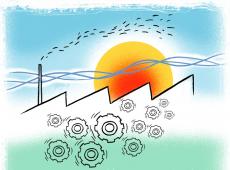
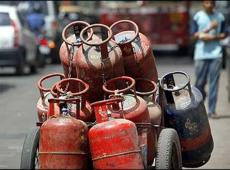
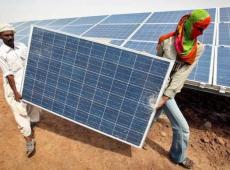




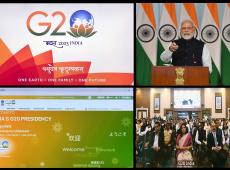

 © 2024 Rediff.com India Limited. All rights reserved.
© 2024 Rediff.com India Limited. All rights reserved.